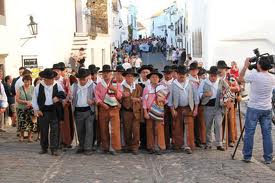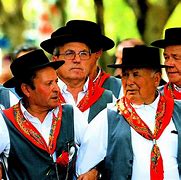It is thanks to the municipality of the small town of Serpa and the tourism authority of the southern Alentejo that the Cante Alentejano was inscribed as a UNESCO Intangible Cultural Property in 2014. This form of singing, typical of the Alentejo, is now officially registered as a cultural heritage of mankind, along with Fado.
There are various theories about the origins, which assume an Arabic, Roman, Christian and even pre-Roman origin or influence. Be that as it may, it is certain that the Cante Alentejano was sung not so long ago by field workers during the long and hot working days in the Alentejo. The first documented association, however, was founded in 1926 by mine workers in Aljustrel. Sociologically speaking, the Cante Alentejano is a form of music that belongs to the proletariat.
Nowadays,
Cante Alentejano singing groups mainly perform at events and have a more focussed character. The Cante Alentejano can also be learnt and several institutions, among others in Serpa, Odemira and Portel, offer lessons.

The Cante Alentejano does not require an instrument and is polyphonic. One or two individual voices recite a line of text which is then repeated by the rest of the singers, i.e. the choir. It is sung standing up or marching slowly in rows with arms hooked.
Writing about music is always insufficient and therefore we suggest you enter the following search terms on Youtube:
“Grupo Coral e Etnográfico da Casa do Povo de Serpa” – (Male, Adult).
“Grupo Coral Alentejano Feminino e Etnográfico “Paz e Unidade” de Alcáçovas” – (Female, Adult)
“Grupo Coral Moços da Vila Alcáçovas” – (Male, Youth and Children)
Have fun!



0 Comments